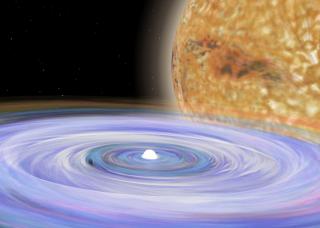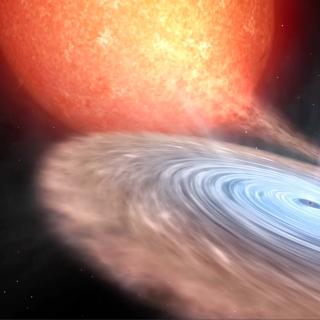Bibcode
Parsons, S. G.; Gänsicke, B. T.; Marsh, T. R.; Ashley, R. P.; Bours, M. C. P.; Breedt, E.; Burleigh, M. R.; Copperwheat, C. M.; Dhillon, V. S.; Green, M.; Hardy, L. K.; Hermes, J. J.; Irawati, P.; Kerry, P.; Littlefair, S. P.; McAllister, M. J.; Rattanasoon, S.; Rebassa-Mansergas, A.; Sahman, D. I.; Schreiber, M. R.
Bibliographical reference
Monthly Notices of the Royal Astronomical Society, Volume 470, Issue 4, p.4473-4492
Advertised on:
10
2017
Citations
94
Refereed citations
88
Description
We present high-precision, model-independent, mass and radius
measurements for 16 white dwarfs in detached eclipsing binaries and
combine these with previously published data to test the theoretical
white dwarf mass-radius relationship. We reach a mean precision of 2.4
per cent in mass and 2.7 per cent in radius, with our best measurements
reaching a precision of 0.3 per cent in mass and 0.5 per cent in radius.
We find excellent agreement between the measured and predicted radii
across a wide range of masses and temperatures. We also find the radii
of all white dwarfs with masses less than 0.48 M⊙ to be
fully consistent with helium core models, but they are on average 9 per
cent larger than those of carbon-oxygen core models. In contrast, white
dwarfs with masses larger than 0.52 M⊙ all have radii
consistent with carbon-oxygen core models. Moreover, we find that all
but one of the white dwarfs in our sample have radii consistent with
possessing thick surface hydrogen envelopes (10-5 ≥
MH/MWD ≥ 10-4), implying that the
surface hydrogen layers of these white dwarfs are not obviously affected
by common envelope evolution.
Related projects

Binary Stars
The study of binary stars is essential to stellar astrophysics. A large number of stars form and evolve within binary systems. Therefore, their study is fundamental to understand stellar and galactic evolution. Particularly relevant is that binary systems are still the best source of precise stellar mass and radius measurements. Research lines
Pablo
Rodríguez Gil

Black holes, neutron stars, white dwarfs and their local environment
Accreting black-holes and neutron stars in X-ray binaries provide an ideal laboratory for exploring the physics of compact objects, yielding not only confirmation of the existence of stellar mass black holes via dynamical mass measurements, but also the best opportunity for probing high-gravity environments and the physics of accretion; the most
Montserrat
Armas Padilla